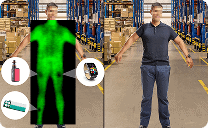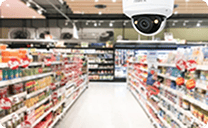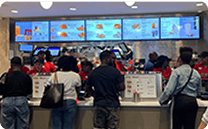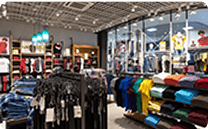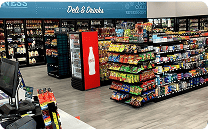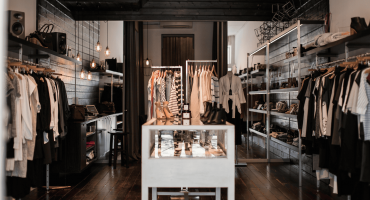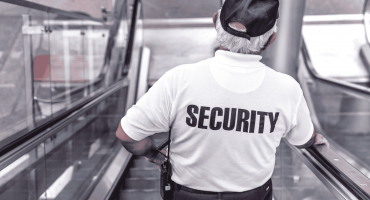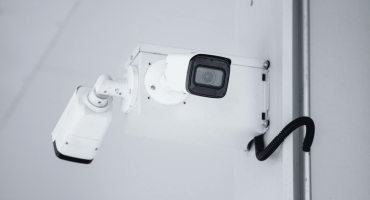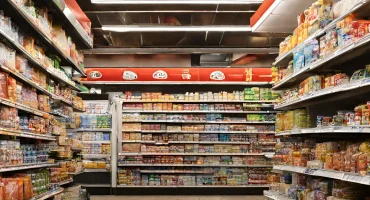In This article
With billions of dollars lost annually to shoplifting, employee theft, and other causes of shrinkage, as well as more sophisticated organized retail crime and cybercrime, retailers need top-tier retail security systems more than ever. Protecting physical assets, such as properties, store equipment, displays, and inventory, is often the primary reason a store owner decides to install a store security system; however, customers and employees also deserve a secure and safe environment. Protecting both is essential to a successful retail operation, which includes highly productive and loyal employees, as well as happy customers who are more likely to return.
Many retailers and retail security companies have demonstrated that effective security strategies can prevent theft and fraud while also minimizing safety incidents. Those key strategies include:
- A comprehensive safety plan with store and customer safety guidelines.
- The right combination of security cameras, monitoring, support equipment, and systems.
- Leveraging technological advances to make a store more secure and safer than in the past.
- Constant training of employees to be a retailer’s “security warriors” on the frontlines.
- A regular maintenance program and reassessment of security needs to upgrade equipment and systems.
Why Retail Security Matters
For many years, personal consumption expenditures have accounted for approximately 70% of the entire Gross Domestic Product (GDP), with retail sales comprising around 40% of these expenditures. The United States’ Q4 2024 GDP was $29.7 trillion. 70% of that is $20.79 trillion, and 40% of this is $8.32 trillion*, indicating the importance of retail security and why retail stores are primary targets for retail crime. Implementing the retail security solutions that work is the answer. Not only do various forms of retail crime harm profitability, but they also erode customer trust. Customers don’t want to shop in a store where criminal activity could occur, potentially causing them injuries or an unsettling experience.
*Source Ceicdata
Common Retail Security Threats:
- Shoplifting is often retailers’ primary security concern because it represents billions of dollars in annual shrinkage losses and typically occurs on the shopping floor.
- Employee theft of inventory and cash, as well as fraud, are other major contributors to shrinkage and require different retail security solutions.
- Small retailers can be targets for organized retail crime and cybercrime because criminals are aware that they are less likely to have advanced security measures.
- Retail security systems must also address health and safety concerns, protecting both employees and customers from injuries, as well as retailers from costly liability judgments and insurance claims.
Top Retail Security Systems
Retailers have numerous options for top retail security systems to create and maintain a safe, secure, and welcoming shopping and work environment. Every store will benefit from some common retail security solutions, while others have unique challenges that require a different combination of equipment and practices. In every case, however, a careful assessment of existing security practices will ensure retailers invest in the right retail security system. The advice of retail security companies can help reveal previously unknown vulnerabilities and select the right retail security system to fill those gaps.
- A store surveillance camera system is the first step in minimizing risks and losses. Technological advancements in CCTV cameras, particularly in Artificial Intelligence (AI) and machine learning, enable more precise imaging, accurate object and facial recognition, and enhanced motion detection.
- AI algorithms in the monitoring equipment networked to a store camera system enable real-time tracking of objects, faces, and motion.
- Some retailers may require the added security of access-control systems due to the high value of the merchandise they sell. These systems, which can include keycards, biometric authentication, and restricted entry areas, help ensure the better management of people flow in and out of a store. They limit access to sensitive areas, reducing the risk of internal theft and improving overall security.
- A retail store alarm system is another vital security component. Whether it’s an unwelcome intrusion, a fire, or other emergency, strategically placed alarms and their emergency-response mechanisms allow employees to respond quickly. These systems not only alert employees and authorities to potential threats but also help to deter criminals by increasing the risk of detection.
- Top retail security systems are also equipped with RFID and inventory tracking features. Retailers have better control of inventory, including unauthorized movement or removal of products, to minimize shrinkage.
Implementing Effective Retail Safety Policies
Investing in and installing retail security systems, including a store camera system, yields the highest return on investment (ROI) when combined with effective retail safety policies. Retailers are responsible for protecting customers, employees, and inventory, so comprehensive safety protocols are critical.
- Every store must establish and share retail safety policies with employees and customers, who may need to respond in an emergency. Some policies may be standard across stores, but others may be necessary for unique situations.
- Employee training prepares them for any security contingency and must include well-defined guidelines and procedures. Responding to shoplifting or theft incidents requires different guidelines than those for identifying fraud or responding to an emergency.
- Retail safety policies must also account for governmental and other regulations, so ownership is fully compliant and is prepared to address government or legal actions.
- Over many decades, improvements in retail security systems and their application in stores have led to the development of a robust knowledge base of industry best practices. Learning and following these practices can save retailers time and money while also creating a more secure and safe store environment.
Best Practices for Minimizing Risks and Losses
What retail loss prevention companies and retailers have learned by following industry best practices is that there is no reason to reinvent the wheel. Adjustments to retail store security systems will always be necessary to counter new theft and fraud tactics, but these best practices provide a good starting point for retailers.
- Despite the capabilities of AI in a retail security system and other advancements in store security equipment, the human element is still a primary deterrent. Thorough and consistent training of employees will equip them with the tools to be more aware of store security and how to prevent theft and protect inventory.
- As the first step in implementing top retail security systems, a risk and store assessment will contribute to an optimal store layout. AI-powered surveillance cameras can deliver sharper images, making all areas of a store more visible to employees and identifying blind spots.
- As retailers implement new customer and transaction conveniences, such as self-checkout, they require advanced monitoring protocols and systems that protect customer data while maximizing traffic and sales. The role of advanced technologies, such as AI-powered cameras, in delivering enhanced retail security solutions should reassure retailers and bolster their confidence in their security measures.
- As retailers implement new customer and transaction conveniences, such as self-checkout, they require advanced monitoring protocols and systems that protect customer data while maximizing traffic and sales.
Monitoring and Continuous Improvement
Retail security systems are dynamic because shoplifting, fraud, and other nefarious activities continue to evolve. Increased exposure to organized retail crime and cybercrime also necessitates updated security practices and ongoing improvements in equipment and employee training. This proactive approach ensures that retailers are always prepared for the latest security threats.
- Retailers should conduct regular risk and security assessments to audit any changes to the store environment and identify new security gaps. Then, a store’s security system can be updated to address new vulnerabilities and persistent weaknesses.
- One of the most significant benefits of AI and machine learning in a retail security system is the ability to perform more sophisticated data analytics. The insights from that analysis can help monitor employees’ performance more clearly as “security warriors” and help retailers revise their security policies and best practices.
- Because customers are shopping and employees are working on the shopping floor, they are often the best sources of information about security gaps. Regular surveys of both groups will provide retailers with the necessary feedback to address those gaps and enhance the store environment’s safety and security.
Conclusion
Smart retailers know that safety risks and losses from shrinkage can’t be totally eliminated. They also recognize that implementing top-tier retail security systems will minimize these risks and losses, protecting employees, customers, inventory, and the bottom line.
Choosing the right retail security system takes some effort:
- Conducting a security and safety assessment with the assistance of retail security companies.
- Investing wisely in a system that fits the exact needs of a store.
- Installing AI-powered cameras, monitoring devices, and other equipment.
- Training and re-training employees.
- Regular audits and upgrading of security equipment and safety practices.
The security and safety rewards are worth any effort: Customers will be happier and more loyal, employees will be more productive and committed to the business’s success, and ownership will likely benefit from a long-term, profitable retail store. To learn more about DTiQ’s retail solutions, visit our website.
